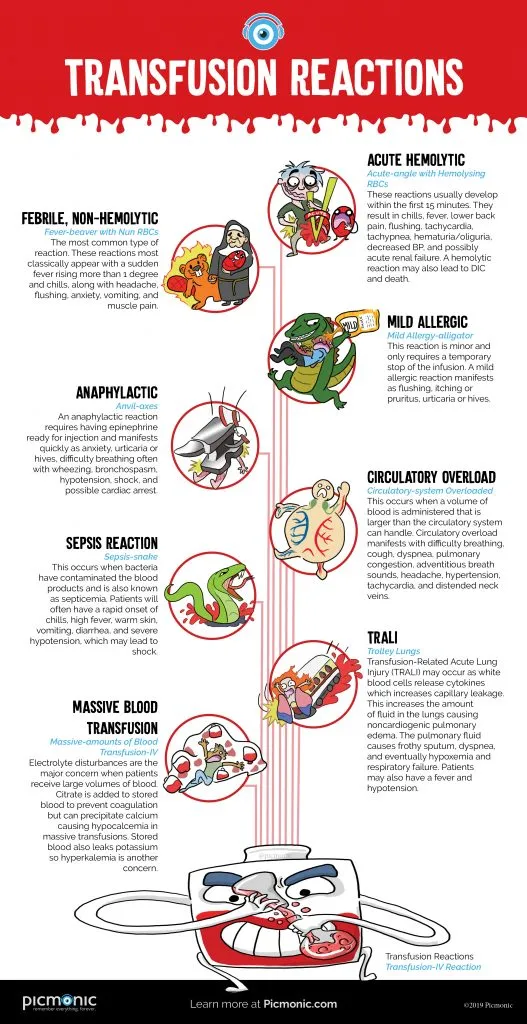Transfusion reactions can range from mild to severe and vary in their types. It is important to be aware of the different types of reactions and assess any patient carefully.

Some topics you will learn in this infographic:
Acute Hemolytic:
These reactions usually develop within the first 15 minutes. They result in chills, fever, lower back pain, flushing, tachycardia, tachypnea, hematuria/oliguria, decreased BP, and possibly acute renal failure. A hemolytic reaction may also lead to DIC and death.
Mild Allergic:
These reactions usually develop within the first 15 minutes. They result in chills, fever, lower back pain, flushing, tachycardia, tachypnea, hematuria/oliguria, decreased BP, and possibly acute renal failure. A hemolytic reaction may also lead to DIC and death.
Massive Blood Transfusion:
These reactions usually develop within the first 15 minutes. They result in chills, fever, lower back pain, flushing, tachycardia, tachypnea, hematuria/oliguria, decreased BP, and possibly acute renal failure. A hemolytic reaction may also lead to DIC and death.
To learn more, get started with a free Picmonic account.













